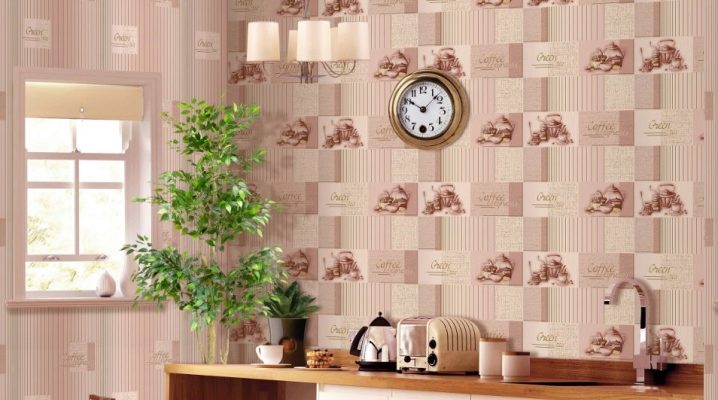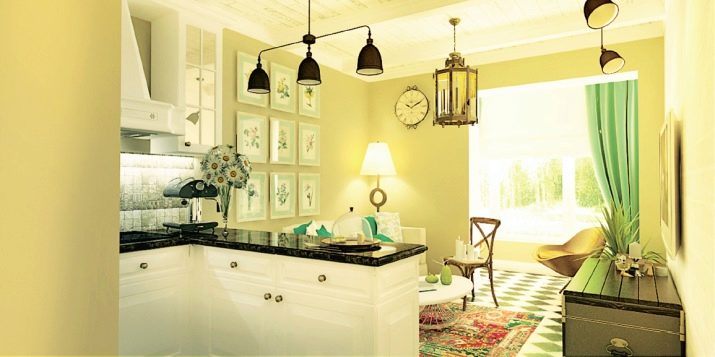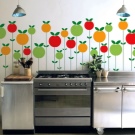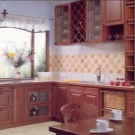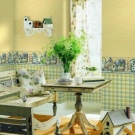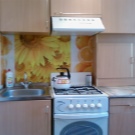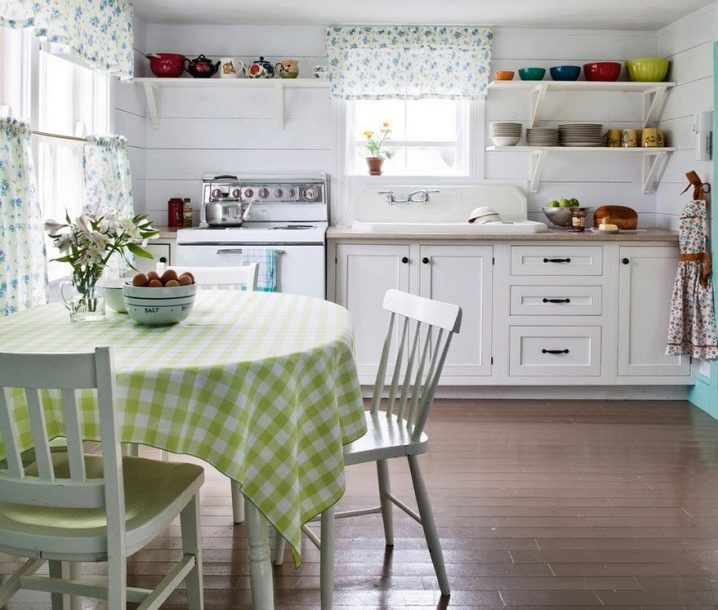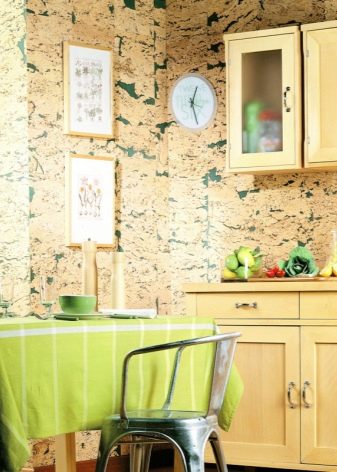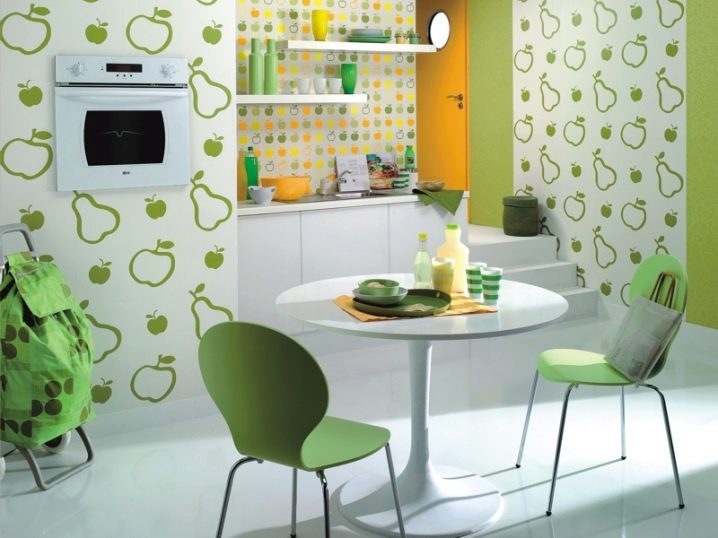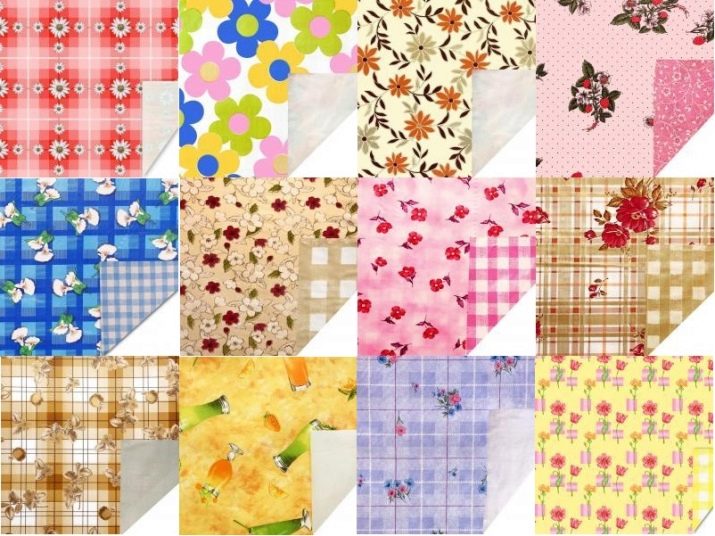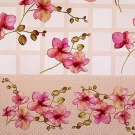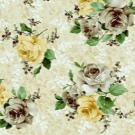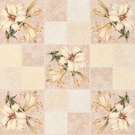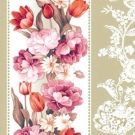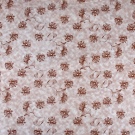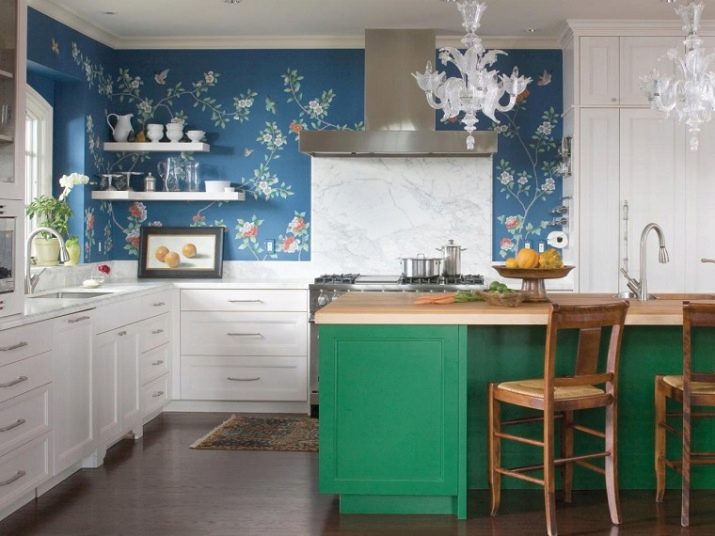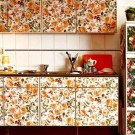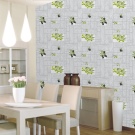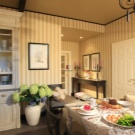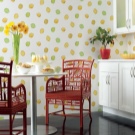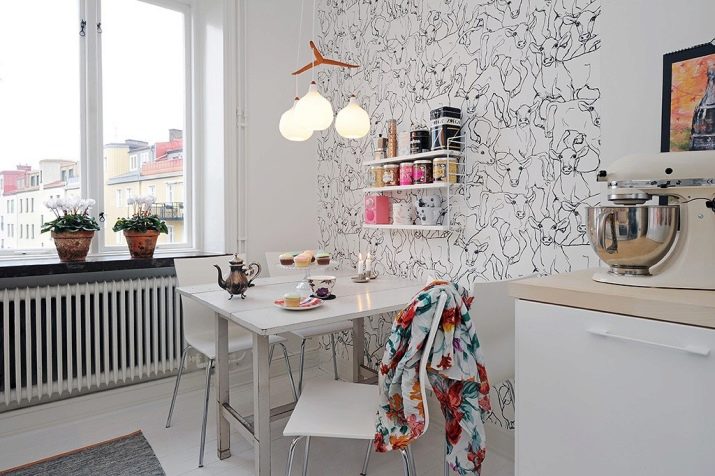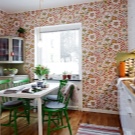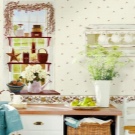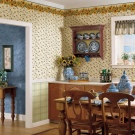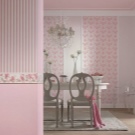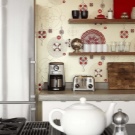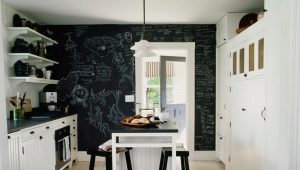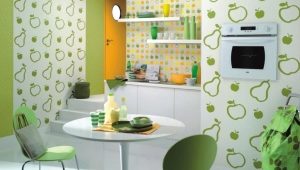Oilcloth on the wall for the kitchen
Making repairs in the kitchen, everyone thinks that everything should be simple and practical, because this room has always been the most popular place in each apartment and the pride of the hostess.
Modern building materials can satisfy the needs of any person, even the most fastidious. But, unfortunately, not everyone has the means to glue over the kitchen with expensive materials. Therefore, the oilcloth on the wall in this case is the best option, because it has a beautiful look and it is quite cheap. The kitchen, most of all, differs from other rooms in its practicality, since the risk of contamination is highest here. Therefore, the oilcloth here will be the most relevant, since after each cleaning it looks like new.
Of course, now on the market a large selection of these products, but how to choose high-quality, not expensive material, but so that at the same time, it looked beautiful and stylish? Let's try to find out, because like every finishing material, oilcloth has its own advantages and disadvantages.
Advantages and disadvantages
- It does not absorb moisture.
- Relative heat resistance - it can also be used as a kitchen apron.
- This type of finishing materials does not absorb dirt and greasy stains, which means that it can be easily washed with a sponge and soap solution.
- Large range of coverage will allow you to choose the color and ornament to any design of your kitchen.
The main disadvantage is that there is a high risk of mold and fungi under the oilcloth, as it does not allow air to pass through.
Of course, this material is not of high quality, since it loses its appearance from the effects of water or steam, because paints are erased.
Following this, the question arises, what kind of oilcloth is best to use in the interior of your kitchen?
How to choose?
First of all, you need to decide which type of oilcloth you want to glue: matte or glossy. Since we are talking about the kitchen, it is best to choose a glossy one, because it is much easier to clean.
You should also pay attention to:
- quality;
- Aesthetics - in the first place, it is the right color;
- the condition of the surfaces to be glued, namely, even or ribbed.If the walls are uneven, then it is better to choose an oilcloth with an ornament - it will hide all the flaws, but only with the right gluing.
How to stick
First of all, you need to calculate how much material is needed. To do this, you need to make measurements of the area of the kitchen where the oilcloth will be glued. For this you need to know the length, width and height of the room. Further:
- It should be well cleaned surface, which will be glued with oilcloth, from the old coating. It can be paint or wallpaper. It is also necessary to thoroughly wash this place from dust and dirt. If at the same time, you used water, then dry the walls well after that.
- When pasting this material, use PVA glue or Bustilat. They are well diluted with water, while not leaving spots and stains. The remains of this glue can be easily wiped off with a damp sponge.
- The oilcloth needs to be cut into strips convenient for you, if there is a pattern - “fit”.
- Glue on the strips should be applied carefully, with the oilcloth must be completely smeared with glue without gaps, because then bubbles may form. For best effect, you can apply the adhesive composition on the wall.This is done in this way: brush or brush with a wall, let it dry, then apply another layer of glue.
- We glue the strip on the wall, smooth the canvas from the center to the edges, so the air under the oilcloth does not accumulate.
- Every second strip of oilcloth is glued with a slight overlap on the first.
- It is best to begin to glue from the corner, so the joints are well glued.
- If, when pasting the oilcloth, it is slightly swollen, you should slightly cut the oilcloth, or pierce it with a needle, let the air out and gently smooth it with a cloth.
- After the glue has dried, the oil should be washed with soapy water. If glue remains or there are stains, wash again.
- In order to preserve the shine for a long time, experts recommend to occasionally wipe the surface of the oilcloth with a mixture of vinegar and milk, which are diluted in equal amounts.
If you want to completely update the kitchen interior, then the oilcloth can also be used for pasting furniture surfaces. She can paste over a wardrobe, a table, cabinets and even a refrigerator. This will give your kitchen a new and fresh look. This method is the cheapest to update the interior.When pasting films with furniture, there are no particular difficulties, because it falls flat on any type of surface.
Have a nice and pleasant interior renovation!
